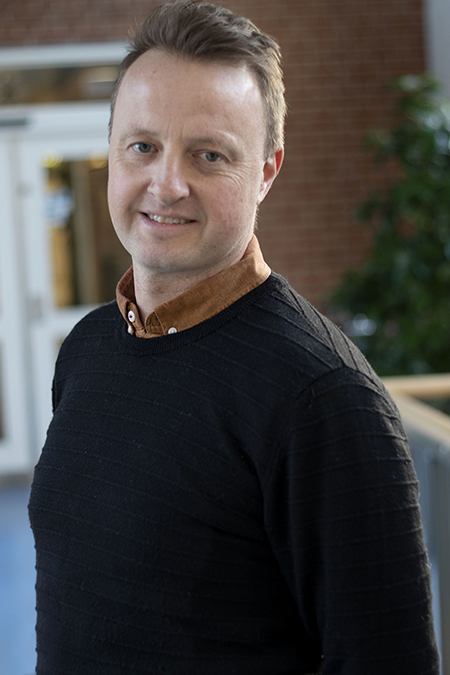Brain proteins targeted by narcotics and psychotropic medications
Meet Steffen Sinning
“New designer drugs are constantly popping up, and there are inventive variations on the amphetamine theme. We often know little about the pharmacological profile of these substances, which makes it difficult to assess their danger and potential for abuse.”
It was a combination of chance and fascination with the human brain that drew Associate Professor Steffen Sinning, b. 1975, in the direction of his field of research: namely, the proteins in the brain particularly targeted by narcotics and psychotropic medications. These are transport proteins and receptors for the group of signal molecules called the monoamines, e.g. dopamine and serotonin.
“These signal molecules play an important role in mood, hallucinations and the reward system, which is hijacked by the development of drug addiction. At the molecular level, I would like to understand how these substances bind and interact with their protein targets, and whether they have any properties that could be improved or exploited differently.”
There is an increasing focus on the possible beneficial properties of a few drugs formally classified as narcotics, even though most of them are associated with damage and addiction. But if it is possible to rein in the beneficial effects of these substances, they could be used in the treatment of depression and drug addiction.
“These are conditions that are difficult to treat effectively, and which have high costs. If we can improve our treatment with research, it would have major benefits for drug addicts, depression sufferers and society as a whole.”

Steffen Sinning has previously contributed to knowledge about how different forms of antidepressants orient themselves in the binding pocket of their target. The researchers combined a number of methods in a new way, and obtained a result which the research group itself considers extremely reliable.
“The gold standard for a model is its ability to predict. We described how antidepressants could be improved through providing lower doses than in conventional medicine. Six to seven years later, crystal structures of the serotonin transporter appeared which were bound to the antidepressant medicine, which showed we were right. It gave us a great deal of professional satisfaction to be able at an early stage to identify a direction for improving antidepressants.”
Currently, Steffen Sinning is working with his colleagues to establish a new method that can describe the effect of substances related to amphetamines and the active substance in khat on a large group of transport proteins.
“New designer drugs are constantly popping up, and there are inventive variations on this amphetamine theme. We often know little about the pharmacological profile of these substances, which makes it difficult to assess their danger and potential for abuse.”
Steffen Sinning is also conducting research into a method for activating or deactivating medications using light at a specific wavelength. The aim is to develop a method to ‘turn on and turn off’ the medicine in the brain, precisely where it produces the greatest effect.
“We hope to develop a tool that will help doctors to pinpoint where in the brain a particular psychiatric disease is rooted, and where it can be most effectively treated. The aim is to create the basis for a new class of drugs with high effect and fewer side effects.”
Steffen Sinning describes his research as lying in the borderland between basic research and applied research with patient experiments. The advantage is being able to see both worlds.
“It is most often applied research that gets the publicity and funding. But applied research stands on the shoulders of basic research, and it is often the technical and methodological advances in basic research that drive applied research forward. In my group, we want to be able to cross back and forth to achieve the best of both worlds.”